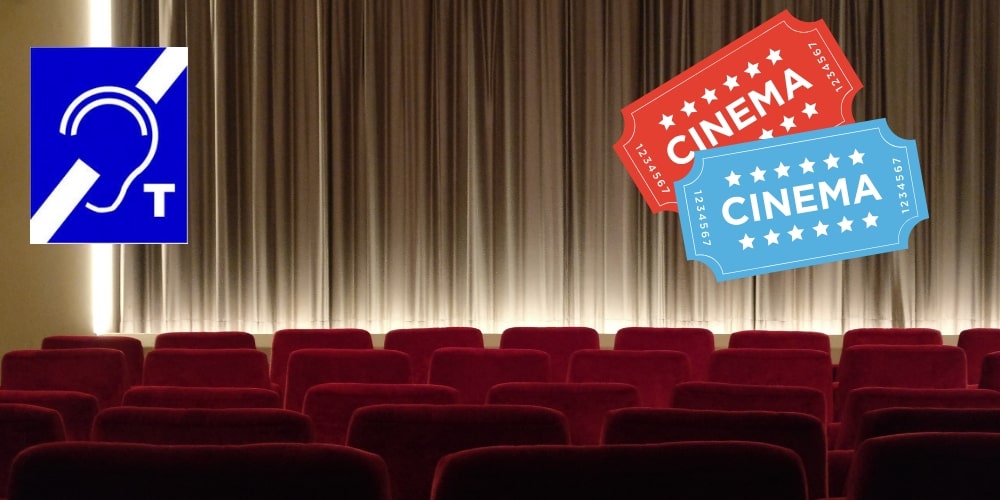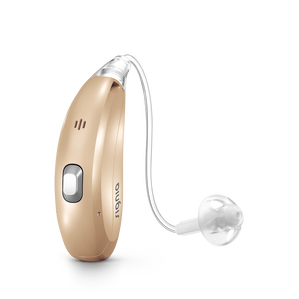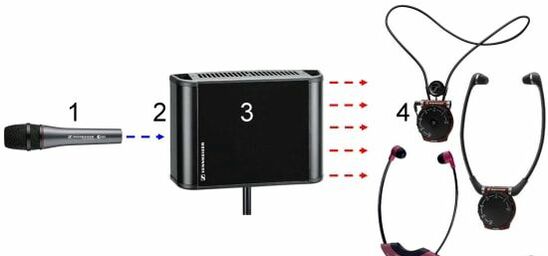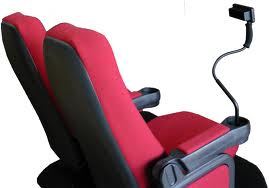
How Hearing Aids Could Help You At The Cinema Room Loops Telecoils
I recently went with my son to the cinema to watch a movie when I started thinking that for some of my patients with hearing aids, this simple yet enjoyable activity can be a quite a struggle for them.
So why is hearing or rather following speech within a movie such a problem for some people who wear hearing aids and what can be done about? In a nutshell, most cinemas nowadays have what we call a room loop, infrared assistive technology or personal captioning devices available for hard of hearing patrons to make it easier for them. We will discuss the latter two options later in this post, but a room loop essentially is a metal rod with coiled wire around it which is located around the perimeter of a cinema. When current travels along the coiled wired, a magnetic signal is induced which can be picked up by a hearing aid that has a telecoil. A telecoil is a much smaller rod which also contains coiled wire found strategically placed inside a hearing aid. This allows the sound from the movie to be delivered directly to the hearing aid and is usually a much clearer and richer sound experience. Let us take a look at what a telecoil is in more detail and how to tell if your hearing aid has one.

What is a telecoil and does my hearing aid have one?
A telecoil also known as a t-coil (or T switch) is just a small component inside some hearing aids that is actually just a metal rod with a coil of wire around it. Its job is to pick up magnetic signals and convert them into an electrical signal that can be processed by the digital signal processing unit of the hearing aid. Unfortunately, not all hearing aids have this component due to space limitations or other technology such as bluetooth or wireless transceivers being prioritised.
With hearing aids getting smaller, the ability to physically house a t-coil is not always possible. The only way to know if your hearing aid has a telecoil is to ask your Audiologist. There are no identifiable marks on the hearing aid itself that can tell you if it has one or not. Your Audiologist should always give you the option of whether you would like a telecoil with your hearing aid as it has many more uses than just at the cinema.
A telecoil can make it easier to hear at the airport, bus terminal, train, art gallery, on the phone and can be used with some remote microphone devices. So I would argue that a telecoil is a feature that one should not simply disregard. Some of my experienced hearing aid patients who relocate over to our clinic having been seen elsewhere know nothing about telecoils and whether their hearing aid has one or not. They are surprised when I tell them about this feature and how they could have been benefiting from it for a while. What a shame.
I have a telecoil. How do I use it in the cinema?
A telecoil can be accessed by changing settings on your hearing aids. This can usually be done by physically pushing a button (either a rocker switch or a single switch) on your hearing aid or selecting the telecoil setting on your hearing aid remote control or smartphone app. Your hearing aids can be programmed to have different settings for different listening environments or situations. A telecoil setting can easily be programmed into you hearing aid by your Audiologist. If pushing the on-board hearing aid switch, you normally only need to do so on the one hearing aid as this will usually change the setting in both hearing aids simultaneously. You should hear 2 beeps to signify that you are now in the telecoil setting. If you are not sure, contact you Audiologist for specific instructions.
The telecoil can be programmed with either the microphones of the hearing aid switched off completely, dimmed or left on. You will get the best quality telecoil signal if you use it with the hearing aid microphones switched off. However, remember this will mean you may not be able to hear those sitting next to you which may or may not be a good thing 😊.
The next thing you need to consider is where the best place to sit at the cinema is. Although every effort is made by the sound engineers to ensure the room loop signal remains uniform in strength across the cinema, this is not actually possibly. What this means is that there will some seats where the signal will not be picked up as well by your hearing aid and hence the sound will be softer than it should. One way to get around this is to experiment yourself and sit in different positions around the cinema to find out which is giving you the best sound quality. Event Cinema (a Perth cinema chain) says that the best seats to access the room loop in their cinemas is in the middle section up the back. If you are not sure, it is always best to ask the staff at your cinema for help.
What if I don’t have a telecoil? What else can be done with my hearing aid?
Although most people with a hearing loss who wear hearing aids do just fine hearing at a cinema, this is not true for everyone. Cinemas are acoustically designed to enable the sound to be distributed evenly across the space with minimal reverberation to ensure a good quality sound regardless of where you sit. However, a good quality sound is not helpful for someone with a hearing loss if their hearing aids are amplifying it too much or not enough. If you are struggling at the cinema or have stopped going because you no longer enjoy yourself due to poor hearing, there are adjustments that can be made to your hearing aid even if you don’t have a telecoil.
One of the most important things to ensure when setting up a hearing aid for someone is to make sure that the MPO or maximum power output is set appropriately. The MPO is the maximum sound level a hearing aid can amplify too. As an Audiologist, this needs to be set high enough so that loud sounds don’t get clipped when they are amplified to reduce distortion. But we also want to make sure the MPO is set to a point that minimised loud sounds to getting painfully loud once amplified. This is always a balancing act. Chances are that if you are struggling at the cinema, the MPO of your hearing aid is set too low.
There are other tricks up our sleeve as Audiologists but this is a good place to start. Also, some hearing aids have a better dynamic range than others meaning they can amplify a greater range of sound levels without reduced sound quality. This is a feature that is being pushed now by some hearing aid manufacturers such as Signia (Motion P nx) and Phonak (Marvel platform) as they understand the importance of being able to maintain a good sound quality of amplified loud sound such as those experienced at a cinema or musical performance.
Other Cinema Assistive Listening Devices.

Infrared
- This system consists of an infrared transmitter that sends audio signals to a device that you wear. This device can either be a neck-loop that can send the signal to your hearing aids via the telecoil. If this is not an option, headsets can be supplied. Please note that the neck-loop option is not available at all cinemas.

Closed Captions
- Some cinemas have a personal closed caption device that you have use to read what you can’t hear. I don’t know about you but sometimes I wish I could read what has been said as even with pretty good hearing, some actors cannot speak properly and mumble the words.
Final Note
If you would like to know if your hearing aid has a telecoil or would simply like us to have a closer look at your hearing aids to optimise them for you, please give us a call on 08 6336 7170 today. You will speak to an Audiologist who can advise you on your next step. If you can’t come to us or are happy where you are, please ask your Audiologist to show you all that your hearing aids can do. You may be missing out on very helpful features to make your day to day communication easier and improve your quality of life.
